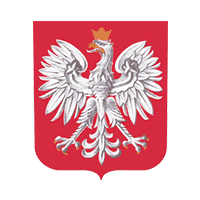Piotr BULENDA, Andrzej GODOJ, Mariusz NAPIÓRKOWSKI
Restructuring in the mining industry resulted in a change to the model of the "ROW" mine. Ruch Anna, including main drainage facilities at 500, 700, 800, and 1000 m, as well as a pumping station at 400 m in Ruch Rydułtowy were closed down. The water from the closed-down Ruch Anna was redirected to a district pumping station at 1067 m via a pipeline built for this purpose. The increased water inflow in Ruch Rydułtowy led to the necessity to modernise two main drainage pumping stations at 800 m. Modern substation bays were installed, a pump monitoring, visualisation, and remote control system was launched, as well as modern high-efficiency pumps by Düchting and Powen and permanent magnet motors were used. Both pumping stations were connected hydraulically by adapting pipelines in the Leon II and Leon IV shafts to pump water alternately from the main drainage pumping station at the shafts to the surface. In 2012-2018, these changes made it possible to reduce electricity costs by PLN 6.7 million. In addition, the modernisation of the pumping system allowed the pumping station at 600 m to be converted into a drinking water pumping station, which supplies a surface fire protection system, a processing plant, and the Rydułtowy Heat Plant, where – after treatment – it supplies the district water supply network. What is more, water paths at 600 m were adapted to work as the main fire water tank for mine excavations. Economic benefits depend to a large extent on the efficiency of the pumps and drives used and limitations imposed by intermediate components. The hydrological safety of the mine has been improved by doubling the ability to pump out underground water to the surface and increasing the reliability of electricity supply.
Iwona GROCHOWINA, Mariusz NOWAK, Małgorzata JANIK
One of the most important environmental protection measures in open-cast mines is the reclamation of post-mining areas. In 2018, after mining the Radkowice-Podwole deposit, the reclamation of the excavation began – and the areas surrounding it to make it a place with water – in order to make it a place with a forest and make it a place with grass, trees, and bushes. The reclamation aims to accumulate groundwater and to create a water reservoir in the excavation with the surface elevation of +220 to +221 m above sea level. As a result, the groundwater level will be increased, while the Bobrza river will change from being the supplying river back to the draining river. As part of the technical reclamation of the excavation, protective slopes were created from the western and north-eastern side. They were created at an angle of 12° to the elevation of +224 m above sea level, and at an angle of 25° at higher elevations. This process ensured the stability of the excavation and improved the landscape surrounding it. The amount of material used to build slopes in the western and north-eastern side was 800,000 m3. Other slopes are entirely rocky and they did not require stabilisation. A backwash filter from local rock material was created at the point of contact between the slopes and the planned water levels. Different species of trees and bushes were planted in the areas after former dumping grounds. As a result of the reclamation activities, the post-mining areas after the operation of the "Radkowice” Dolomite Mine at the Radkowice-Podwole deposit were organised, which gives them a chance to be used for another purpose, and by creating a water reservoir the commune undoubtedly became more appealing to tourists. The reclamation of the excavation is still in progress. It is assumed to be completed in 2023.
Justyna BAJKOWSKA
The paper assesses the correctness of the position expressed in the judgment of the Voivodeship Administrative Court in Gliwice concerning the extraction of sand in order to meet your own needs as well as the legitimacy of the determination of an increased fee if the extracted mineral was not exported or sold. While approving the judgement given by the court, the importance of its interpretation of "mineral extraction" in the practice of administrative proceedings concerning the determination of an increased fee was also stressed. In addition, the consequences of extracting sand and gravel by a natural person from real estate being their object of property (perpetual usufruct) in order to meet their own needs, in violation of the requirements set forth in Article 4 sec. 1 and item 2 of the Act – Geological and Mining Law, were analysed. It was indicated that in the case of extraction violating the requirements given in these provisions, the party conducting extraction activities should expect that the mining supervisory authority will impose an increased fee pursuant to Article 4 sec. 3 of the aforementioned Act. The court stressed that even though the extraction of sand to satisfy your own needs is subject to "light" regimes provided for in the Act, it is still subject to the restrictions contained therein.

